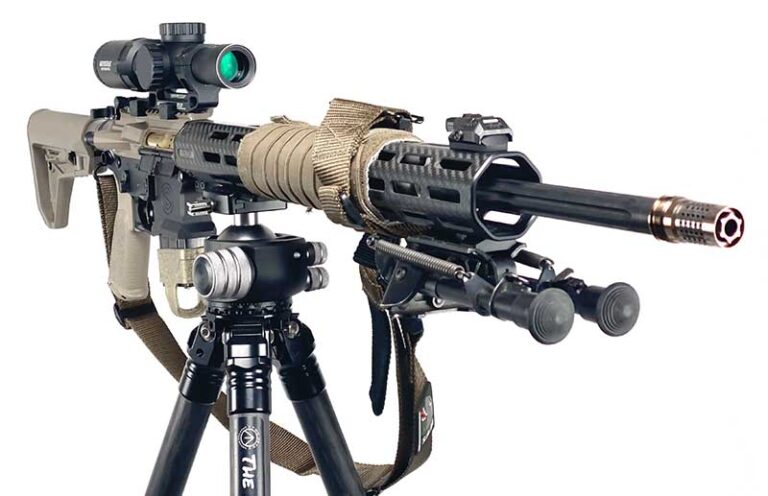
Specific golf clubs are made for specific distances, and so are guns. Here the author goes over what makes a good midrange rifle.
For many shooters, there’s a degree of skill declination at 300 yards. When I grew up, I shot matches at Camp Perry. We were shooting World War I and World War II-era rifles at 200 yards—at targets substantially smaller than these guns were designed to fire at, and I recall how far away 200 yards seemed in that vast space. Even when firing full-power 7.62x54R and .30-06 at what many shooters would consider a “short” distance, there was a noticeable change in point-of-impact across the line when wind came.
Never is a bullet free from the influence of its environment. If you think you’re going to get immediate and consistent first-round hits with high-end long-range rifles, you’re sorely mistaken. No amount of money spent can guarantee hits. All that cash does is decrease variables and, in theory, make your rifle more consistent shot-to-shot so long as your ammo is of equal consistency and quality. Accuracy features, such as “match-grade” parts, heavy or thick barrels, adjustable stocks or chassis and top-shelf optics are really consistency features that reduce the amount of variables in how you interface with your rifle.

Because environmental factors are always going to be a variable you can’t control, you end up controlling variables on the gun. The general trend is that the closer the target is to you, the less you need consistency features. Barrels get skinnier (weight savings at the price of heat buildup), calibers smaller (more ammo at the cost of projectile weight/power) and sights/optics with bigger aiming points.
In turn, shooters end up making up their guns like golf clubs: “This is my CQB gun in .300 Blackout. This one is my DMR in 5.56. This rifle is my long-range rifle in 6.5 Creedmoor.
This golf club mindset is very detrimental because it encourages selection based on an imaginary barrier. Why practice with an 8-inch .300 Blackout AR pistol at 500 yards, when it’s a close-range gun? Why shoot your $5,000 precision rifle at 200 yards? That’s like drinking a bottle of 10-year-old Rip Van Winkle with your McDonald’s drive-thru!
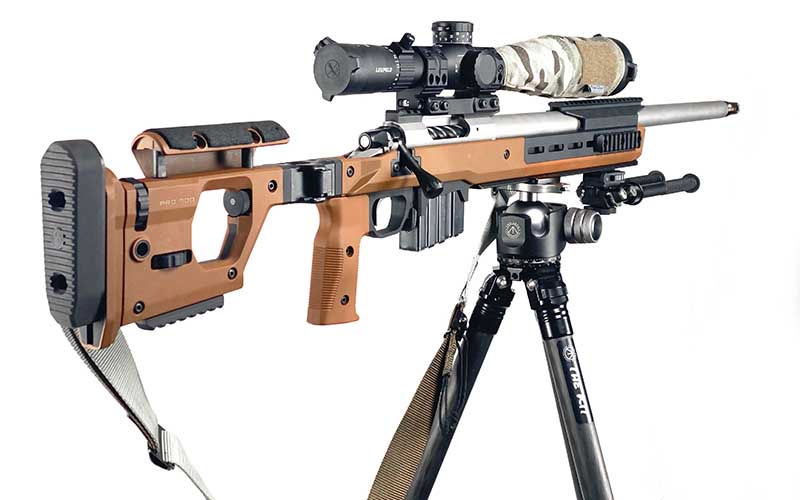
Ballistic Procrastination
Shooters caught up in the minutia of one specific facet of precision are, to me, stuck in procrastination. Worrying about spin drift at 1,000 yards is a waste of time if you still scratch your head on wind at 500. Worrying about wind at 500 yards is pointless if you’re not able to do basic holdovers at 300 to 400. When you’re hungry for a sandwich, you don’t start off with buying the deli.
The same goes for close-range skills, where there’s a heavy emphasis on speed, reloads and clearing malfunctions. Close-range skills have their place, but in no way does this translate to hunting or shooting at medium distance in general. I’ve been hunting for a long time and never have I had to perform a “tac reload” or “transitioned to my sidearm.” It’s good to know, but these things won’t make you a better shooter when you need to take your time and observe your surroundings and general environment.

The 300-Yard Meat Grinder
For many shooters, 300 yards is long shot. When hunting, 300 yards is a long shot. Long-range hunting is talked about constantly, but it’s absolutely not the norm, nor should it be.
The idea that 300 yards is long range will get you laughed at by some people, but “long range” begins when you really need to start actively observing the environment around you. The environment always has an impact, but with many rounds you can cheat … up to a point. With a .338 Lapua or 6.5 Creedmoor, you need to pay far less attention to the details at 300 yards, but swap in a .30-30, .300 Blackout or a .450 Bushmaster, and 300 yards is long range for them.
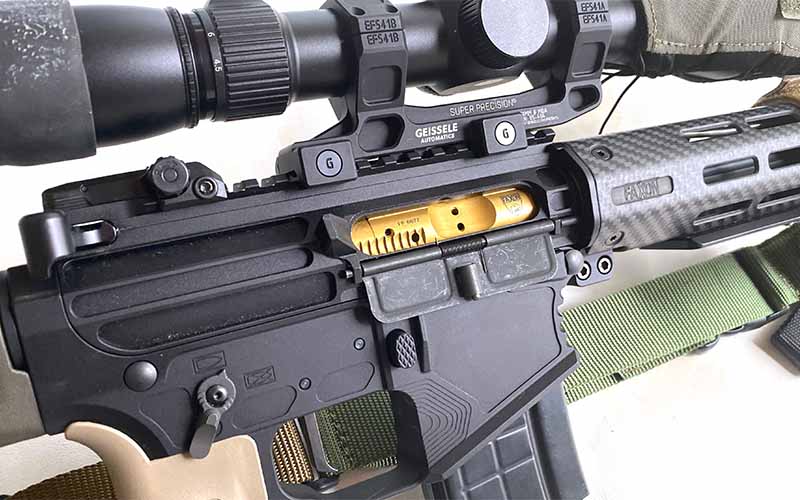
The thing with midrange rifle distances is that they can be exceptionally unforgiving. Many guns made in the “designated marksman rifle” style have a number of consistency features, but they’re substantially heavier and longer than their close-quarters brethren.
The AR rifles in this article show this well; the lightweight, 16-inch carbine with irons and a red-dot is very capable at 200 yards from any position, but 300 yards requires stability … and the irons and dot allow no magnification. Despite being faster handling than the Brownells M16A1 build, it isn’t any more capable once ranges increase to 300 yards, where they become equals. With a fixed zero at 50 yards each, these guns are capable of repeated hits on an IDPA target up to 350 yards, and then things begin to drop off—literally.

The two .224 Valkyrie builds are another story: one with the new Vortex 4.5-22x, and the other with a Geissele 1-6x. These are light rifles—only slightly heavier than the 5.56mm ARs—but more powerful at all ranges thanks to the heavier weight of the 90-grain Federal match rounds.
These rifles, one designed for precision with a matched Next Level Armament receiver set and the other for speed and suppressor use with the new SilencerCo gas-defeating charging handle and ambi lower, have optics with a dedicated mil-based reticle and stretch out the effective range of the rifle considerably.
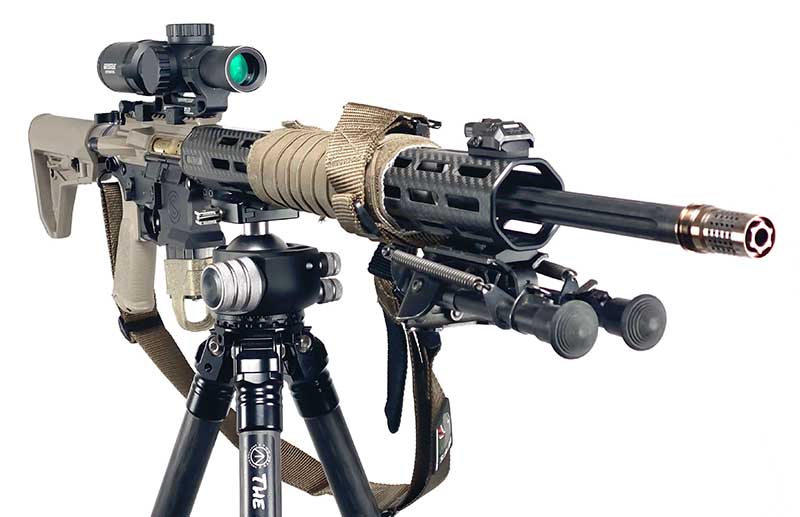
However, these are basically turbocharged carbines and, while hits become easier 500 yards, they also have issues with the wind at close distances. They’re .22-caliber bores, so while it’s possible to cheat a bit and make rapid hits at midrange, you still must pay close attention to drop, drift and heat buildup as the ranges extend.
Finishing out the carbine class is the new Springfield Hellion, a variant of the Croatian VHS rifle. The rifle offers a compact overall size and a full-length 16-inch barrel. And, due to its small size, it performs well at close range but also offers surprising utility at 300 to 500 yards. It’ll never be an accuracy machine, but thanks to its longer barrel, it allows for just as much practical utility as the M16A1 or lightweight AR carbine.
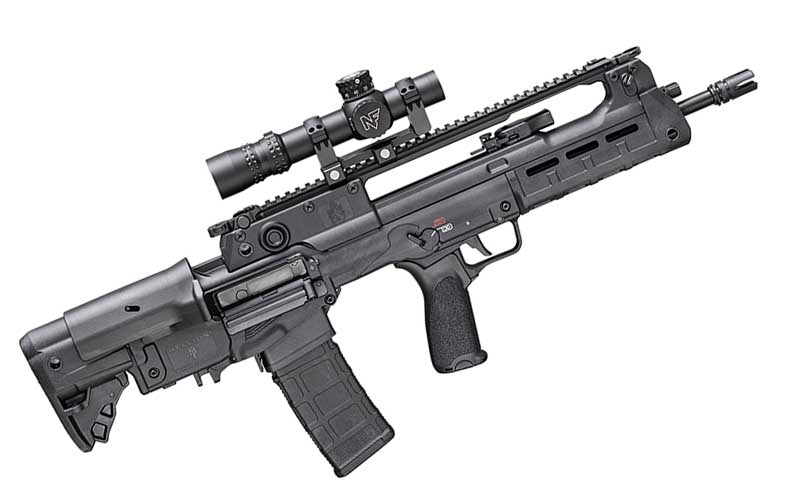
Getting into bolt actions, we see the widest field of potential applications. The rifles in this article are both in 6.5 Creedmoor, one full stainless and the other carbon-fiber and titanium. This weight and feature class is heavy for close range, but when it comes to shooting and hunting in general, the mid-weight bolt gun is next to impossible to beat.
The Vortex Razor Gen III 6-36x and piggybacked Trijicon RMR, allows for both snap shooting and shots past 1,000 yards. The 13 MOA RMR is zeroed for impact at the top edge of the dot for 100 meters. Simply placing the dot on the center of a target and firing keeps the rifle on target to about 300 meters with an IDPA-size plate. It’s extremely fast, but lacks precision for small targets.
This style of rifle, with a full 24-inch barrel and completely adjustable stock, is certainly not the lightest or fastest handling, but it dominates the rest of the field beyond 200 yards. At a certain point, compact size and low/no magnification is what limits effectiveness at medium ranges.
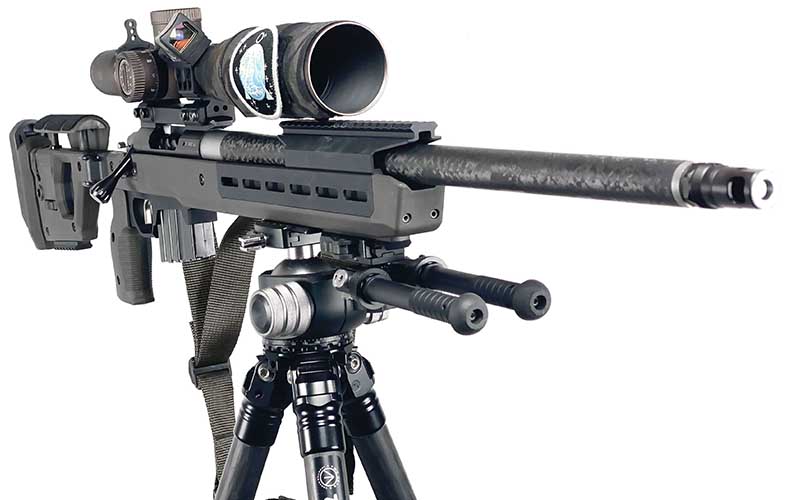
That Happy Medium
A mid-caliber rifle, like something between a 6.5mm and a lighter .30-caliber, in a weight you can shoot offhand and move easily with, is the dream setup across the board in terms of balance between consistency features and field utility. It really comes down to the level of performance you’re looking for in your midrange rifle.

It’s possible to have “a little too” much in some areas, such as optics and weight, but if you’re balancing with a cartridge powerful enough, these little excesses become benefits when the environment comes into play.
Editor's Note: This article originally appeared in the June 2022 issue of Gun Digest the Magazine.
More On Precision Shooting:
- Precision Rifle Upgrades: From Stock To Sniper Superstar
- Nine Long-Range Shooting Fundamentals To Master
- Accuracy Enhancing Support: Choosing A Bipod
- Legacy Skills: Becoming A Well-Rounded Long-Range Marksman
- Becoming Your Own Spotter

Next Step: Get your FREE Printable Target Pack
Enhance your shooting precision with our 62 MOA Targets, perfect for rifles and handguns. Crafted in collaboration with Storm Tactical for accuracy and versatility.
Subscribe to the Gun Digest email newsletter and get your downloadable target pack sent straight to your inbox. Stay updated with the latest firearms info in the industry.

![Best Concealed Carry Guns In 2025 [Field Tested] Wilson Combat EDC X9S 1](https://gundigest.com/wp-content/uploads/Wilson-Combat-EDC-X9S-1-324x160.jpg)


![Best 9mm Carbine: Affordable PCCs [Tested] Ruger Carbine Shooting](https://gundigest.com/wp-content/uploads/Ruger-Carbine-Shooting-100x70.jpg)
![Best AR-15: Top Options Available Today [Field Tested] Harrington and Richardson PSA XM177E2 feature](https://gundigest.com/wp-content/uploads/Harrington-and-Richardson-PSA-XM177E2-feature-100x70.jpg)
